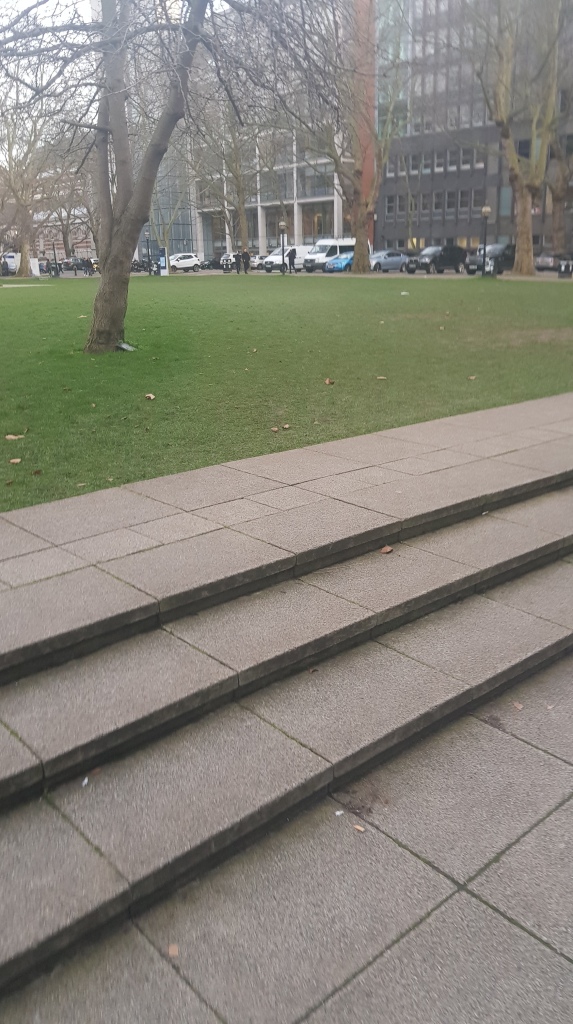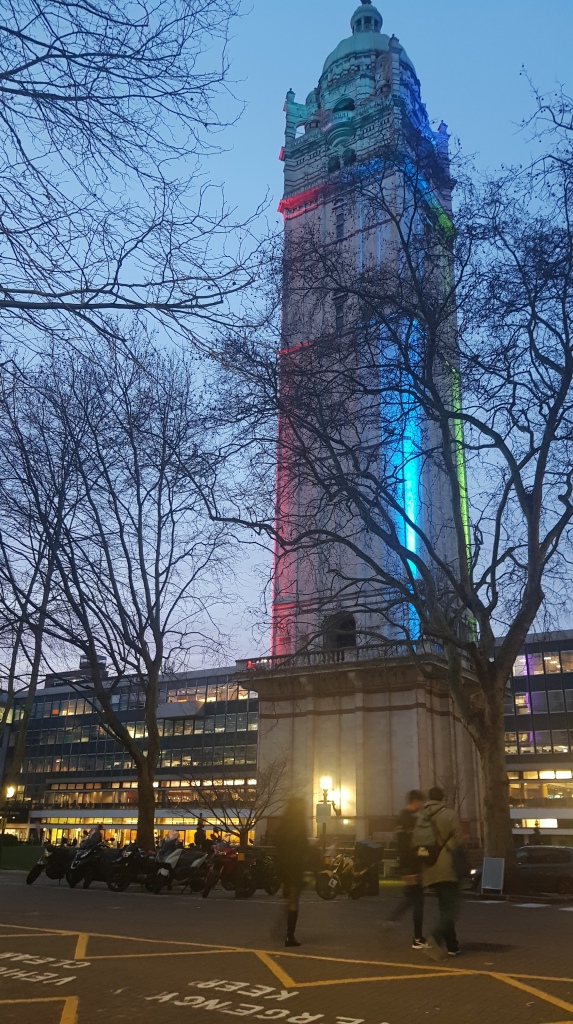Time to share yet another insight with you about what my day to day life as a science communications officer is like. My role is hugely varied but I spend mot of my time producing different ways to communicate my colleague’s latest research. That could be through articles, videos, or engagement events.
For this particular chapter of The Scicomm Career Diaries, I wanted to share more about two events I went to on the same day – annoyingly they clashed! But also share some of the things I learnt when it comes to equality, diversity and inclusion in engagement projects, and tips for scientists dealing with the media in all forms. So, cue the next chapter!

07:15 – Another day, another train trip. But this time a new train compared to previous chapters as I have moved house since the last time I shared this type of shot. But heading down into London to head to Imperial College London’s South Kensington campus.

.

09:24 – After a quick pitstop to grab a pastry for breakfast, I’ve sat down to do some work before the Engagement Day starts. Finishing an article, checking on emails, finishing a brochure for an event and updating social media.
.

12.15 – And we are nearly ready to kick off Engagement Day. The first part of the day involved a talk from Claire Ainsley of the Joseph Rowntree Foundation about how public engagement can connect communities and citizens. My big take away from this is really thinking about the language you use when engaging with people. I don’t just mean using no scientific jargon, but think about how your works might be excluding people, or the way you label something might make someone feel like it isn’t for them. Top tip – use your community audience to do the naming. That way they are comfortable with how it is labelled.
Lightning talks followed the first keynote of the day. Four different speakers had a few minutes to talk about empowering diverse groups in engagement. What I loved about these lightning talks were the slides were pre-set to change after a certain amount of time. And while presenting the talk would have been pretty stressful, it was really useful to keep people to time. A skill everyone needs in my opinion. I particularly loved the talk from Dr Jackie Bell called “Building successful and equitable community partnerships”. One thing that I miss about being in scicomm now and not doing my own research is that I don’t have any research of my own to communicate and engage with audiences about at events. I really miss that. But one part of Jackie’s talk mentioned about going into a church looking for someone to find some older ladies knitting. Jackie was meeting someone to talk about teaching particle physics to a group, but the older ladies said ‘why don’t you teach particle physics to us’? And it got me thinking that I can still talk about stem cells and cell biology more broadly, as I did sink many years of work into that. I still have the skills to keep on top of new developments too. So, when we finally move into our first home together – I want to find some community groups just to share more about stem cells with them and use their interests and expertise to create something, just like Jackie and her ladies created a particle physics knitted blanket – which I love the idea of.
.

13:50 – The downside of having two events scheduled at the same time is I had to miss the workshops at Engagement Day talking about co-production, evaluating success and more. But at least the events were on the same campus, so I headed across ready for the Press Office Bootcamp.
.

14:05 – This bootcamp session was designed for researchers wanting to engage with media to boost their research some more. Now while I am not a researcher, I support all the researchers at my institute to do just that so I thought I would go along to make sure there weren’t any tricks in the book that I was missing out on. Turns out – I think I know what I’m doing. Well, at least to help novice researchers get involved.
We had sessions from the press teams, social media teams and Imperial’s videographer and photographer and talked about things that researchers should be thinking about to boost the impact of their research. This involved discussing what research was ‘newsworthy’ and the structure of a press release. We talked about what media is useful to accompany these releases and top tips for speaking to journalists as a scientist. The social media team gave us a beginner’s guide to Twitter as that is the main platform researchers are going to get impact from, but also how to use it to boost your profile and a few other tools that can help making an online presence a little bit easier. Finally, we got some top tips on what to look for in making your own videos, being videoed on Skype or images for journal covers and more.
It was great to know that I actually knew a lot of this and was supporting researchers in the best way I can. Downside was that I missed the engagement workshops where I would have learnt new things, but the reassurance is a big thing for me. I want to build upon all the lessons shared here in future blog posts too.
.

16:00 – Press bootcamp all wrapped up. Time to jump back across campus and back to Engagement Day where I could the tail end of the second keynote from the WISE campaign’s Helen Wollaston talking about how we can improve gender balance and those opportunities in STEM.
.

16:23 – Time for the final session of Engagement Day – the panel featuring Helen Wollaston, Prof Chris Jackson, Dr Jess Wade and chaired by Dr Suze Kundu. It was a really inspiring and insightful panel discussion that explored the meaning fo “empowerment”, “diverse communities” and more. Once again my key take home message from this panel was the language you used when engaging. For example, does the work empowering actually make your audience feel belittled and that you are the only one who can give them that knowledge or benefit. Many more things to consider, and made me want to incorporate more engagement learning and of course doing into my job role. Good job I have my appraisal coming up soon where I can discuss those opportunities.
.

17:08 – And thats a wrap – complete with this beautiful shot of Queen’s Tower at Imperial College. While it was a manic day, I left really inspired and wanting to rekindle my love for in-person engagement and not just digital engagement.
I hope you enjoyed seeing a completely different day in the life of a scicomm officer to normal. You can check out Chapter 1, Chapter 2 , Chapter 3 and Chapter 4 here for even more insights, and there is plenty more where that came from including a ‘work from home’ special.
.
If you have any questions about anything you have seen in this blog, or about my career in scicomm generally, please ask me in the comments all of your questions! Or if you are a scientist wanting to learn more about using media for research impact do get in touch and I will help as much as I can.
Is this what you thought a day in the life of a science communications officer would look like?
I’m also thinking about making these style posts into video form – so if you would prefer that or would like that as well then I would love to hear your thoughts.
